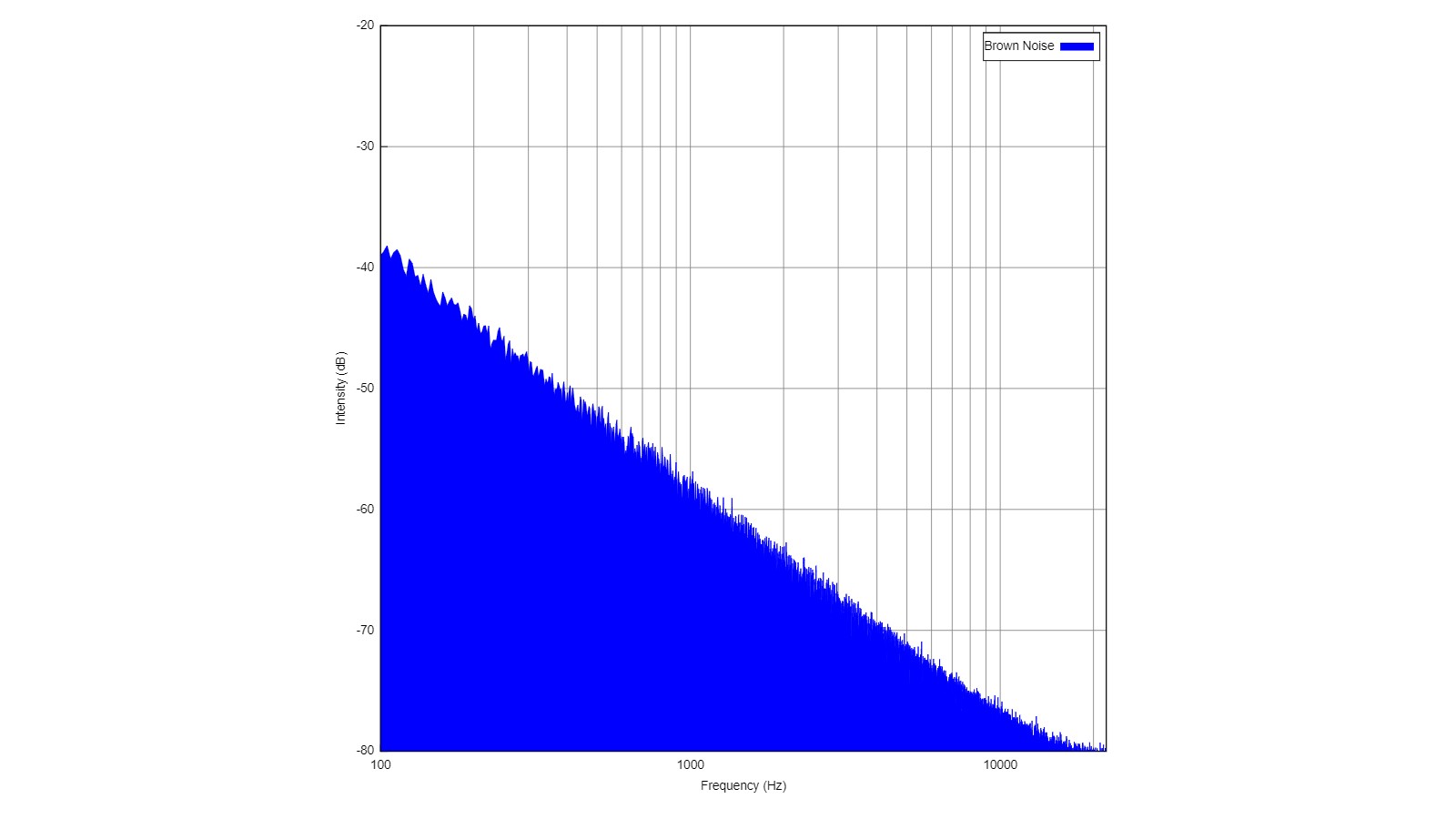
What is brown noise?
Brown noise is also known as Brownian noise because its change in sound signal from one moment to the next is random.

Brown noise is a type of low-frequency sound produced by the same process that causes so-called Brownian motion. It has nothing to do with color; instead, brown noise gets its name from the 19th-century Scottish botanist Robert Brown, who discovered a certain kind of random microscopic motion that is now referred to as Brownian motion. Brown noise is also known as "red noise" and is characterized by a heavy emphasis on low-frequency sounds.
You've probably heard brown noise without realizing that it had a special name. The rumble of a waterfall, thunder, or heavy rain is very close to brown noise, and many people find the sound soothing and comforting.
Who discovered Brownian motion?
Robert Brown, a Scottish botanist, discovered Brownian noise in 1827 when he was looking through a microscope at pollen grains suspended in water. Brown noise is sort of an offshoot of Brownian motion. To his astonishment, the pollen grains appeared to dance and move around, even though they weren't alive. He couldn't come up with an explanation, but he dutifully recorded his observations for posterity. Later scientists would call this behavior "Brownian motion" in his honor.
"I actually did a rather similar experiment with a student once, and it is fascinating to observe the motion of these particles in real life," Erez Aghion, a professor in the department of chemistry at the University of Massachusetts Boston, told Live Science in an email. "In this experiment, we have something quite unique in the whole world of science. We have the ability to directly observe and monitor a phenomenon that looks like 'magic.'"
It wasn't until almost a hundred years later when a then-unknown Albert Einstein took an interest in the problem. In a single paper, published in 1905 in the journal Annalen der Physik, Einstein explained the motion of microscopic particles as a consequence of discrete atoms or molecules constantly striking each other — providing a solid case for the very existence of atoms, which, up until that time, had been heavily debated.
"It is incredible to me that not only [do] we have an exact mathematical model that can describe the microscopic motion of each individual particle so nicely; this model also explains perfectly the macroscopic properties of the pollen as a collection," Aghion said.

Einstein realized that every microscopic particle, like the pollen grains first observed by Brown, is constantly bombarded by its neighbors. For example, a typical air molecule at room temperature gets bumped by other air molecules more than 10^14, or a hundred trillion, times every second. Over long periods of time, these collisions cancel each other out; the strikes on one side roughly equal the strikes on another side. But in small enough windows of time, the strikes are uneven, and the random collisions send the particle in one direction.
Sign up for the Live Science daily newsletter now
Get the world’s most fascinating discoveries delivered straight to your inbox.
But then, a moment later, the balance shifts in another direction, and the particle moves in another direction. Jitter by jitter, the particle appears to stumble from one spot to the next, all due to those chance encounters.
This is called a random walk, and Brownian motion is a special kind of random walk. At every moment, the particle can travel in a random direction. And the size of the step that the particle takes changes every time, too. Most of the time, the collisions are only a little off-balance, resulting in a tiny nudge. But rarely, the collisions are much bigger on one side, giving the particle a large jump.
Both the direction and the size of the steps are random in Brownian motion, but bigger steps are rarer than shorter steps. In fact, the defining characteristic of Brownian motion is that the size of the steps follows a normal distribution — the same kind of "bell curve" we encounter in statistics all the time.
How is brown noise created?
So, how do we go from Brownian motion to brown noise? Einstein realized that the motion of an individual microscopic particle was the combined result of countless random collisions. By taking purely random interactions and adding them all together, you ended up with Brownian motion.
Similarly, you can take white noise, which is random noise that has an equal amount of power across all frequencies, and add it up. This gives a kind of noise that decreases in power as the square of the frequency, emphasizing low frequencies much more than high frequencies.
Brown noise is similar to pink noise, which decreases in power directly in proportion to the frequency, but with much more power in lower frequencies. Pink noise sounds like A TV set crossed with the ocean.
The other name, red noise, comes from an analogy to light. Red light has more lower-frequency waves than white light does, just like brown noise comprises more lower-frequency sound waves than white noise does. To the human ear, brown noise sounds like a deeper, "bassier" version of white noise.
This article was originally published on Live Science on July 30, 2013 and was updated on June 23, 2022.

Paul M. Sutter is a research professor in astrophysics at SUNY Stony Brook University and the Flatiron Institute in New York City. He regularly appears on TV and podcasts, including "Ask a Spaceman." He is the author of two books, "Your Place in the Universe" and "How to Die in Space," and is a regular contributor to Space.com, Live Science, and more. Paul received his PhD in Physics from the University of Illinois at Urbana-Champaign in 2011, and spent three years at the Paris Institute of Astrophysics, followed by a research fellowship in Trieste, Italy.









